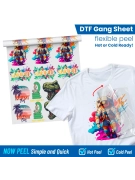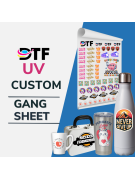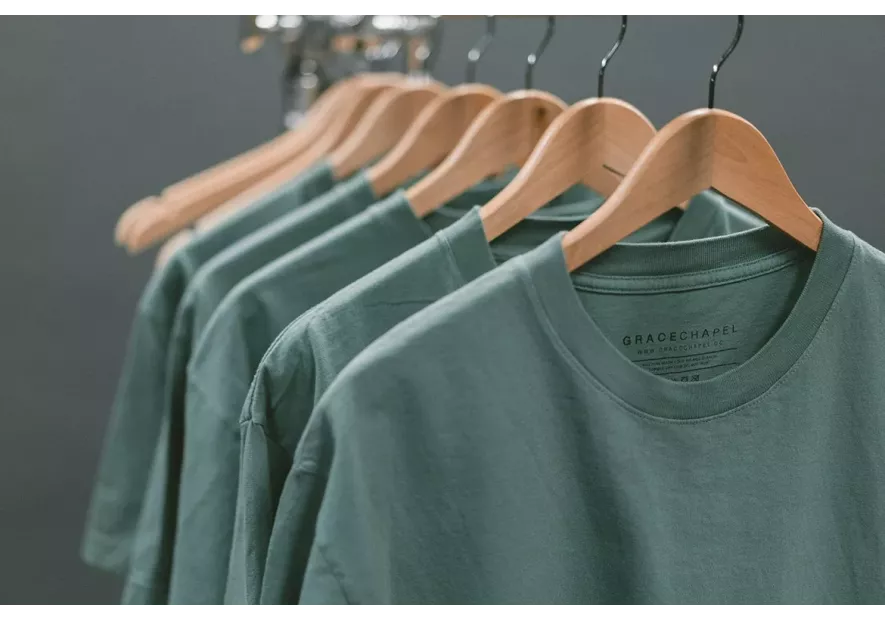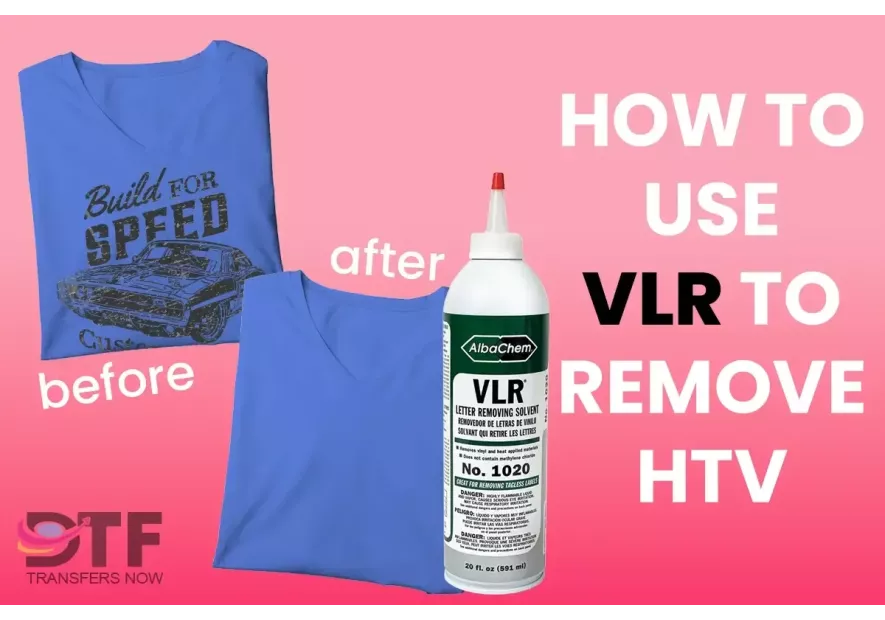DTF Meaning: What is Direct-to-Film Printing?

Introduction
If you're a small business owner, t-shirt printer, or creative hobbyist, you've probably come across the term "DTF". But what exactly does DTF mean in printing? In this guide, we'll break it down step by step. Whether you're just starting out or considering expanding your printing method, understanding DTF (Direct-to-Film) is essential for success in custom apparel.
DTF printing has rapidly become a go-to method for decorators due to its flexibility, ease of use, and cost-efficiency. Unlike other traditional printing methods, DTF empowers users to produce vibrant, high-quality prints on demand without the typical limitations of fabric type or intricate designs.
What Does DTF Mean in Printing?
DTF stands for Direct-to-Film, a revolutionary printing technology where designs are printed onto a special PET film using DTF inks and then transferred to garments using a heat press. Unlike traditional methods that print directly on fabric, DTF allows you to create vibrant, durable transfers that can be applied to nearly any material.
DTF printing eliminates the need for pretreatment (unlike DTG), weeding (unlike HTV), or costly setup (unlike screen printing). It bridges the gap between professional results and affordability, making it a favorite among startups, home-based crafters, and large production shops alike.
How Does the DTF Printing Process Work?
Here’s a step-by-step breakdown of the DTF printing workflow:
- - Create or Choose a Design – Begin with a high-resolution digital design in PNG format, preferably with a transparent background.
- - Print on PET Film – Use a DTF printer to print your design onto PET film using CMYK and white DTF inks. The white layer ensures visibility on dark fabrics.
- - Apply Adhesive Powder – While the ink is still wet, sprinkle TPU adhesive powder evenly over the design to ensure full coverage.
- - Cure the Powder – Use a heat press or curing oven to melt the powder. This bonds the adhesive with the ink, prepping it for transfer.
- - Heat Press the Film – Place the cured film on the garment, press at 300°F for 15 seconds with high pressure, and peel the film (hot or cold peel depending on your film type).
This process is simple, scalable, and efficient for all types of users, from hobbyists to industrial-scale operations.
DTF vs Other Printing Methods
Understanding how DTF stacks up against other common printing techniques can help you make informed business decisions.
- - DTF vs DTG (Direct-to-Garment)
- - DTG prints directly on fabric, best on cotton and requires pretreatment.
- - DTF prints on a film and then transfers to fabric, suitable for cotton, polyester, blends, nylon, and more.
- - DTF doesn’t require fabric prep or pre-treatment sprays.
- - DTG offers slightly softer hand-feel, but DTF has better versatility and production speed.
DTF vs Screen Printing
- - Screen printing is ideal for large-volume runs of simple, 1–3 color designs.
- - Requires separate screens and long setup for each color.
- - DTF allows full-color, photo-quality prints with minimal setup and no screens.
- - Great for one-offs, small batches, or full-color complex designs.
DTF vs Heat Transfer Vinyl (HTV)
- - HTV involves cutting vinyl, weeding, and layering which is labor-intensive.
- - DTF prints everything at once – no weeding or cutting required.
- - HTV is limited to solid color layers, while DTF allows gradients, shadows, and high-resolution detail.
- - DTF feels softer and adheres better to curved and stretchy garments.
DTF vs Sublimation
- - Sublimation only works on light-colored, polyester garments.
- - DTF works on any color and nearly any fabric, offering greater flexibility.
- - Sublimation dyes the fabric while DTF lays ink on the surface.
- - DTF is a better option for printing on cotton and dark garments.
Benefits of DTF Printing
- - Incredible Fabric Compatibility: Works on cotton, polyester, tri-blends, canvas, fleece, spandex, and even hard surfaces with the right film.
- - No Pretreatment Needed: Reduces labor and mess, speeding up production.
- - Brilliant Color Output: Produces vibrant, photo-realistic prints with white underbase support.
- - Durability: Withstands 50+ washes without fading, cracking, or peeling.
- - Flexible Feel: Transfers are soft, stretchable, and breathable.
- - Fast Turnaround: No setup time means quicker production for small and large orders.
- - Cost-Effective: Perfect for short runs or custom orders. Lower material and labor costs.
- - Scalable: Whether you're printing a single shirt or 1,000, the process remains consistent and efficient.
Common Mistakes to Avoid
- 1. Skipping Fabric Preparation
Always pre-press garments to remove moisture and wrinkles. This step ensures a smooth surface and optimal adhesion.
- 2. Incorrect Heat Press Settings
DTF transfers typically require 300°F–320°F, 10–15 seconds, medium pressure. Inaccurate settings may lead to poor adhesion or over-melted designs.
- 3. Using Low-Quality Consumables
Invest in reliable DTF films, powders, and inks. Poor quality materials can clog your printer, create rough textures, or reduce wash durability.
- 4. Not Curing Film Correctly
Under- or over-curing the powder can cause issues. Follow the recommended curing time (usually 2–3 minutes at 250°F–265°F).
- 5. Storing Transfers Improperly
Humidity and heat can ruin printed films. Store your cured transfers flat in a cool, dry place.
Applications of DTF Transfers
- - Apparel Printing: Ideal for t-shirts, hoodies, tank tops, baby onesies, joggers, and jackets.
- - Accessories: Apply to caps, tote bags, aprons, and even shoes.
- - Teamwear: Print logos, numbers, and names for sportswear or uniforms.
- - Merchandising: Create branded items for events, fan clubs, or influencer drops.
- - Gifts and Craft Projects: Customize home décor, pillow covers, and novelty items.
- - Patches: Create high-resolution patches to be sewn or pressed on hats, denim, or tactical gear.
Tips for Best Results
- - Always test your heat press temperature and pressure before mass production.
- - Use a lint roller before pressing to remove dust.
- - Let designs cool for a few seconds before peeling (if using cold peel film).
- - Store your unused PET films in a resealable bag to prevent contamination.
Conclusion – Bringing DTF Into Your Business
DTF means Direct-to-Film printing, a game-changing process where you print your design on a special film, apply adhesive powder, and heat press it onto fabric. It's efficient, versatile, and ideal for small businesses or DIY creators looking for high-quality prints on demand.
Compared to older methods, DTF stands out as the modern, versatile solution that combines affordability with professional quality. It gives creators the freedom to print on demand without compromising on quality or speed.
Ready to experience DTF for yourself? Order custom DTF prints now and discover why this innovative method is taking over the custom apparel world.





Leave a comment